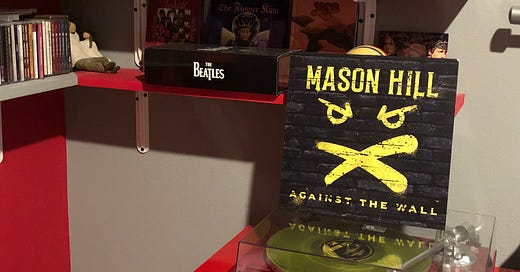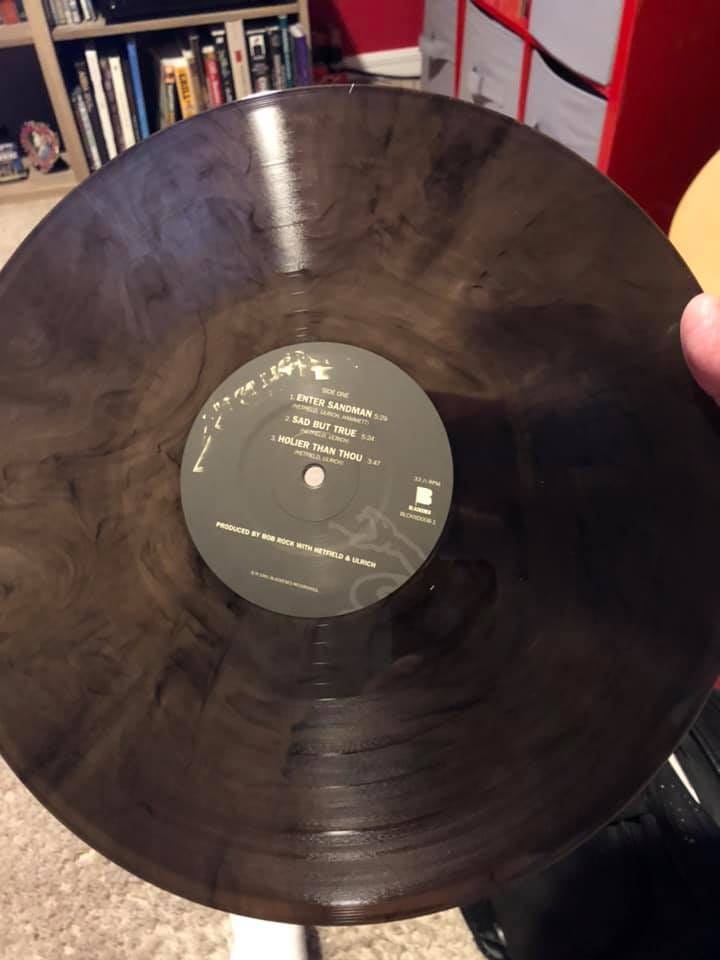The Debate About Vinyl Exclusives
I'm telling you it's perfectly fine to buy a green record at WalMart.
Welcome to another edition of Michael’s Record Collection and thanks for spending a few minutes with me. While I normally like to talk about specific albums or artists, I wanted to address something I’ve been coming across more and more on social media and message boards. I hope you enjoy it and share it with your friends. If not, maybe my next issue will be more to your liking.
One of the things I didn’t know when I bought my new turntable and took the leap back into vinyl records was that there is this whole subculture that can’t agree on anything. I have a sportswriting background and I’m used to that kind of behavior among sports fans, but record collectors can’t seem to get on the same page about much of anything, aside from “vinyl good.”
I came across the argument about “exclusive” or “limited” editions recently after buying a couple of them. One of these I bought directly from the band — a yellow copy of Mason Hill’s Against the Wall. This was limited to 300 copies and included a signed postcard from the band. I was happy to help out the young, up-and-coming, Scottish rockers by buying directly from them.
The other album I got recently was a “WalMart Exclusive” 2-LP version of Metallica’s black album on marbled black vinyl. I don’t know how many copies this “exclusive” is limited to (or if there’s a limit, beyond having to go to WalMart, which will test anyone’s limits) but I’d never owned that particular record and I thought it was time I did. I also thought it looked cool. Guess what? It also sounds magnificent. I didn’t buy it for its “exclusivity,” but I have to admit I love the way it looks.
I pre-ordered another limited edition recently as well. Colin Hay is releasing his Going Somewhere album on white vinyl in a run of 1,000 copies to celebrate the record’s 20th anniversary. I don’t own it on CD or vinyl so I snapped it up. I’m happy to support the former Men at Work frontman and the album looks great. I bought it from Amazon for 20 bucks and had five bucks’ worth of rewards points to put towards the purchase as well, so I saved even more.
I was made aware by some folks in the vinyl community that I shouldn’t buy albums from big box stores or Amazon. This is another common vinyl argument I read about online. These collectors argue that I should support my local independent record store. The thing is, I don’t live that close to a true record store, although there’s a shop not too far away that sells records, books, and other items. I’ve bought things there before. I’ve also bought vinyl from several record stores spread out across Orlando. In fact, my friend Jerry and I took a 25-minute drive to nearby DeLand to check out a couple of record stores not too long ago. I bought one album from each of the two stores. (If that story sounds familiar, I did mention it in a previous issue.)
Since I don’t have a desire to use up all my available living space by filling my home with records, I don’t plan on really ever being that guy who comes into the store regularly and knows all the employees by name. I would like to live closer to some of my favorite record stores but even then it would be more about browsing than buying. I figure a record a month is good for me, unless something special or unbelievably inexpensive comes up. This schedule gives me time to play them and get to know them the way I did when I was a kid — when I might get a couple records at Christmas and one for my birthday, but not too many in between.
I feel like I’m a guy who wants to support the industry as a whole. This means buying records, sure, but why limit myself to one or two local places? Buying online, directly from the band, as I did with Mason Hill, maximizes their cut of the sale, and it also got me a cool ancillary item. Buying from WalMart got me a record I wanted — at an affordable price — that looks great and sounds fantastic. Amazon was simply the easiest and quickest way for me to get in on the Colin Hay record and I can already access the album digitally while I wait for the release date of the vinyl in June. That’s how Amazon became an evil empire in the first place — availability, speed, price, and ease. Hey, I’m only human.
Many of the exclusive records, whether from Target, WalMart, Newbury Comics, an artist’s website, etc., are on colored vinyl. There are some folks who still avoid those like the plague, because generally they don’t sound as good as a plain old regular black LP. However, technology has caught up to a large degree and some of these things sound great. I’ve got a white vinyl copy of Duke by Genesis, which I quite like, and that Metallica album is amazing. The yellow Mason Hill album sounds good to my ears, too. I do have a purple pressing of Talk Talk’s It’s My Life that is a bit noisy but it’s a static magnet, so to make it sound its best I have to clean and brush it for an uncomfortable amount of time before playing it. Sometimes I’m willing to do that and other times, I just put up with a little surface noise.
The colored-vinyl-vs.-original-black debate is yet another one I’m coming across online, much like the debates about exclusives and where to buy. I like records. If they’re black, fine. If they’re colored, cool, but they have to sound good. As long as they do, I’m fine with both.
So, why don’t some vinyl collectors care much for exclusives?
Some vinyl collectors dislike exclusives largely because they hold colored vinyl in such disregard. Others feel the “exclusive” label is elitist (and it kind of is, but whatever) and that it allows stores or online outlets to jack up the price. This does happen, but I have a rule about how much I’ll spend on a record, and I’ve gotten good deals on the few exclusives I’ve bought. The super cool red pressing of the new AC/DC record at Target is something I’d like, but it’s too pricey for me. So, I don’t buy it. If people are willing to spend more, that’s their choice. I’m not going to try to kill their buzz over it.
Another thing that opponents of exclusive editions point out is that these pressings have created an online culture of album flipping. This practice is when someone buys up a bunch of exclusives and holds onto them until they’re out of print or just hard to find, and then they sell them online for much more than the original price. It’s scalping for records instead of concert tickets. While this is a despicable practice, the simple answer is just don’t buy them. If the flippers get stuck with a bunch of orange Taylor Swift albums they can’t unload, they’ll eventually lower their price. However, many collectors are obsessive, and they can’t exercise the restraint necessary to wait out the flippers.
That might be oversimplifying record flipping, but you’ve got the basics of it now. I’ve made peace with the fact that I’m not going to be able to buy everything I want and I am sticking to my principles of buying only records that are at or below my max budget for a slab of vinyl. I can be a tad obsessive, but I’ve also come to terms with not needing to buy every pressing in existence of my favorite album. I refuse to be a completist in this hobby because that’s prohibitively expensive and, as mentioned, I simply don’t have the space.
So, in the end, I take a “the heart wants what the heart wants” approach to my record collection. If there’s an exclusive that’s cool, affordable, and sounds good (based on online vinyl reviews or collectors that I trust), I’m perfectly willing to drive over to Target or WalMart to pick up a copy. Otherwise, I’m fine with the original black vinyl. And if other people want to spend 40 bucks on a red/blue/green splatter copy of an album at a big box store that’s widely available in black at their local indie shop, that’s their choice.





